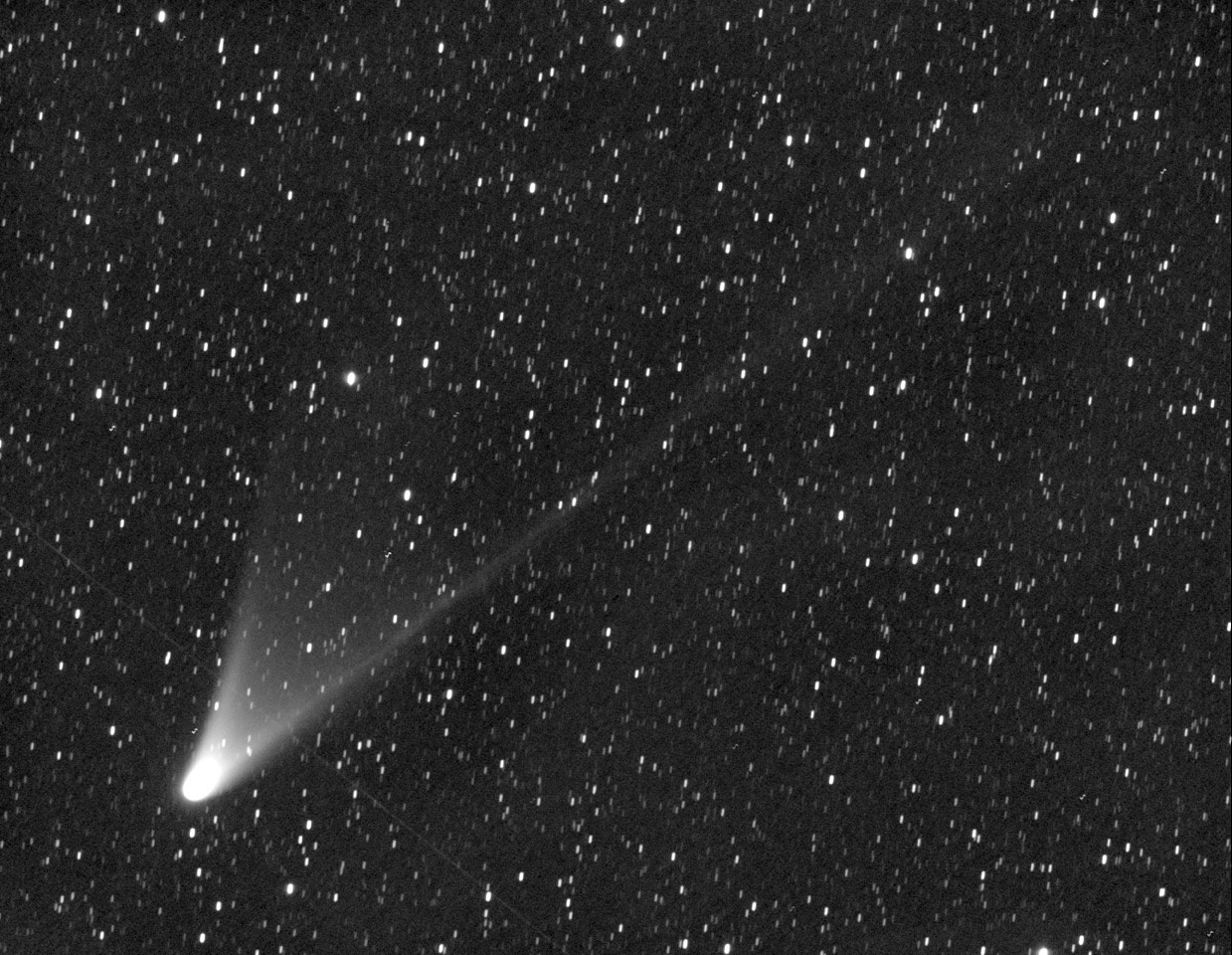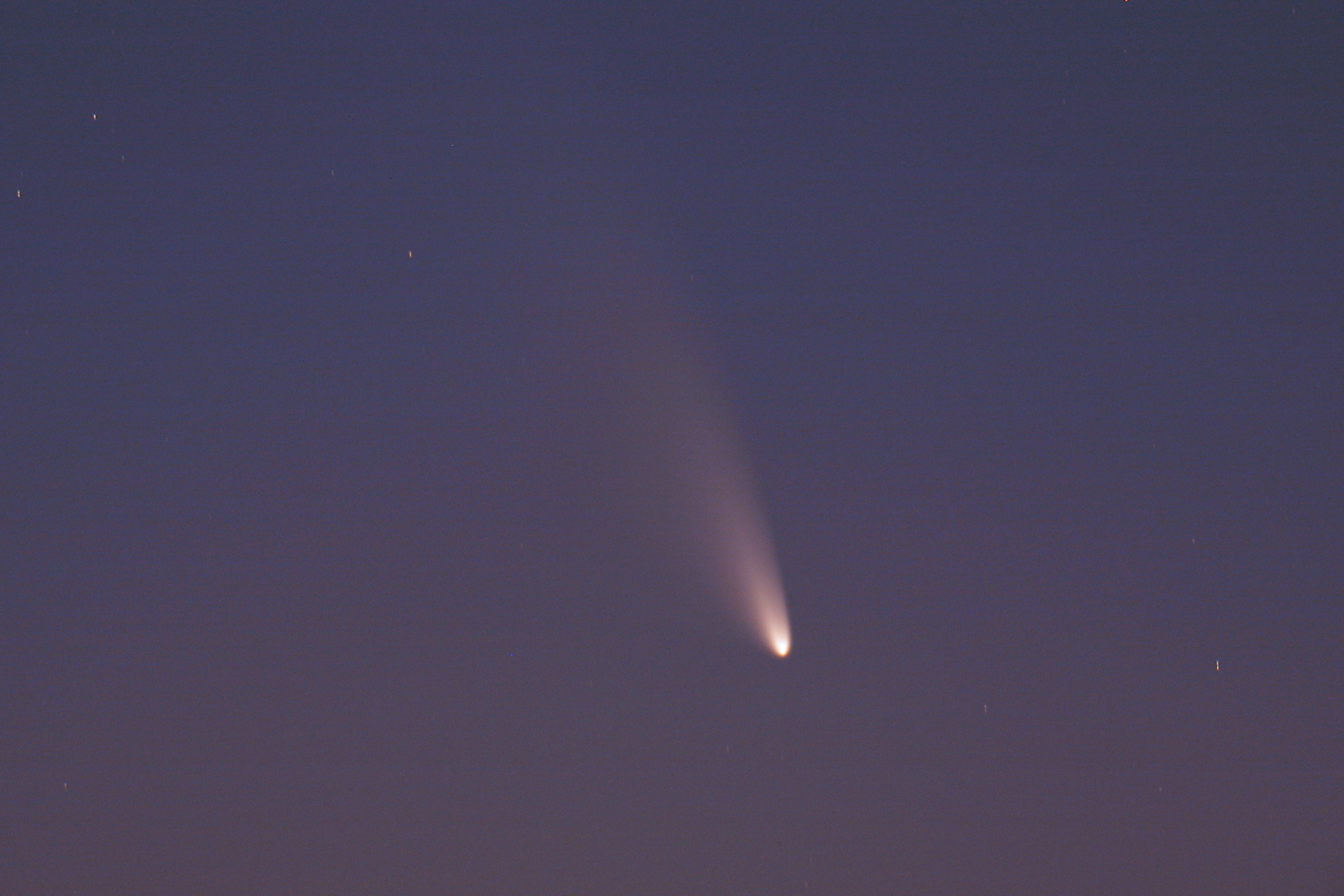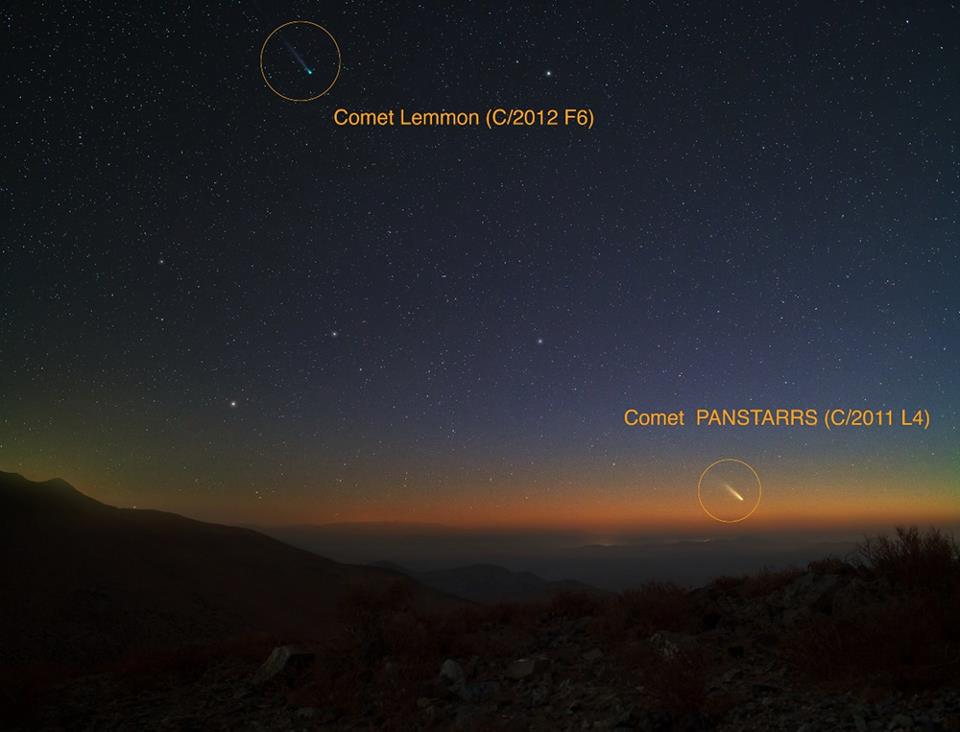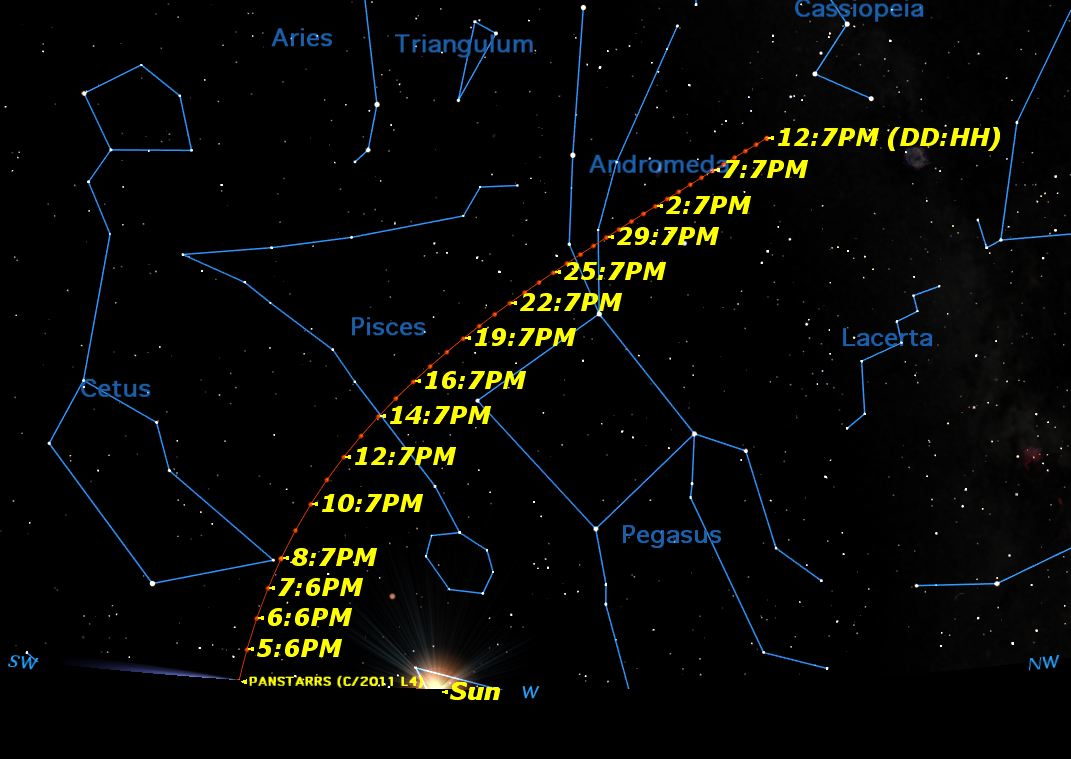6 Surprising Facts About Comet Pan-STARRS in Night Sky

Stargazers, take note: Comet Pan-STARRS is in the northern sky and can be seen with the naked eye … at least for now.
The comet is set to be at its brightest in the Northern Hemisphere on Sunday (March 10) when it makes its closest approach to the sun. Comet Pan-STARRS already made its closest brush with Earth Tuesday (March 5) when it passed about 102 million miles (164 million kilometers) away from the planet.
Here are six interesting facts to keep in mind when you look for the comet low in the twilight sky this weekend:

1) You will never see it again
Comet Pan-STARRS, officially , has a long elliptical orbit around the sun. Really long. The cosmic ball of dirt and ice takes more than 100 million years to complete a full cycle around the star, according to astronomers with the McDonald Observatory at the University of Texas, Austin. [How to see the comet]
Comet Pan-STARRS was discovered in June 2011 by a team of astronomers using the Panoramic Survey Telescope and Rapid Response System (or PANSTARRS) telescope in Hawaii.
2) It comes from the edge of the solar system
Get the Space.com Newsletter
Breaking space news, the latest updates on rocket launches, skywatching events and more!
Pan-STARRS was flung into the inner solar system from the Oort cloud, a mass of icy bodies orbiting the sun from just beyond the orbit of Neptune out to a range 100,000 times the distance between the Earth and sun, NASA officials have said. A rogue comet's orbit is occasionally changed, bringing it closer to the sun than it has ever been before.
3) It is a "sungrazing" comet
When a comet enters the inner solar system from the Oort cloud on a course that brings it extremely close to the sun, the object is known as a "sungrazer." On Sunday, Comet Pan-STARRS will be about 28 million miles (45 million km) from the sun.
Sungrazing comets have irregular orbits, making them unpredictable. Sometimes, their trajectories can even bring the comets close enough to collide with the sun. But if a sungrazer survives its close brush with the star, like Pan-STARRS has, the comet can brighten magnificently.
4) It almost faded away
While astronomers initially thought that Comet Pan-STARRS could dazzle stargazers with its brightness, the comet exhibited some early signs that it wouldn't brighten as expected in the northern sky. Some astronomers predicted that the comet's magnitude — a measure of its brilliance — would fade, making it difficult to see once it passed above the equator, but now scientists expect that the comet may brighten even more when it passes close by the sun on Sunday, before fading quickly thereafter.

5) Comet Pan-STARRS isn't alone in the sky
The year 2013 could be the year of the comets. Pan-STARRS already shared the southern sky with Comet Lemmon. While Lemmon won't make an appearance in the Northern Hemisphere this year, some stargazers did catch the two comets in a celestial pairing when they briefly shone in the same part of the sky.
In November, another sungrazing comet is expected to make waves with skywatchers. Comet ISON could be the brightest comet to streak across the skies in a generation if it survives its close brush with the sun.

6) Time is short to see Comet Pan-STARRS
While it only just appeared in the Northern Hemisphere this week, Pan-STARRS will be gone before you know it. The comet can be seen with the naked eye, though it still may be difficult to spot.
"There is a catch to viewing Comet Pan-STARRS," Amy Mainzer, the principal investigator of NASA's near-Earth object hunting NEOWISE mission at the Jet Propulsion Laboratory in Pasadena, Calif., said in a statement Thursday (March 7). "This one is not that bright and is going to be low on the western horizon, so you'll need a relatively unobstructed view to the southwest at twilight and, of course, some good comet-watching weather."
After Pan-STARRS makes its closest brush with the sun on Sunday, the comet will begin to dim. Stargazers with telescopes and binoculars might still be able to see the sungrazer until early April, but it will fade out of naked-eye visibility before the end of March.
Editor's note: If you snap an amazing photo of Comet Pan-STARRS, or any other celestial object, and you'd like to share it for a possible story or image gallery, please send images and comments, including location information, to managing editor Tariq Malik at spacephotos@space.com.
Follow Miriam Kramer @mirikramer or Google+. Follow us @Spacedotcom, Facebook or Google+. Original article on SPACE.com.
Join our Space Forums to keep talking space on the latest missions, night sky and more! And if you have a news tip, correction or comment, let us know at: community@space.com.

Miriam Kramer joined Space.com as a Staff Writer in December 2012. Since then, she has floated in weightlessness on a zero-gravity flight, felt the pull of 4-Gs in a trainer aircraft and watched rockets soar into space from Florida and Virginia. She also served as Space.com's lead space entertainment reporter, and enjoys all aspects of space news, astronomy and commercial spaceflight. Miriam has also presented space stories during live interviews with Fox News and other TV and radio outlets. She originally hails from Knoxville, Tennessee where she and her family would take trips to dark spots on the outskirts of town to watch meteor showers every year. She loves to travel and one day hopes to see the northern lights in person. Miriam is currently a space reporter with Axios, writing the Axios Space newsletter. You can follow Miriam on Twitter.









